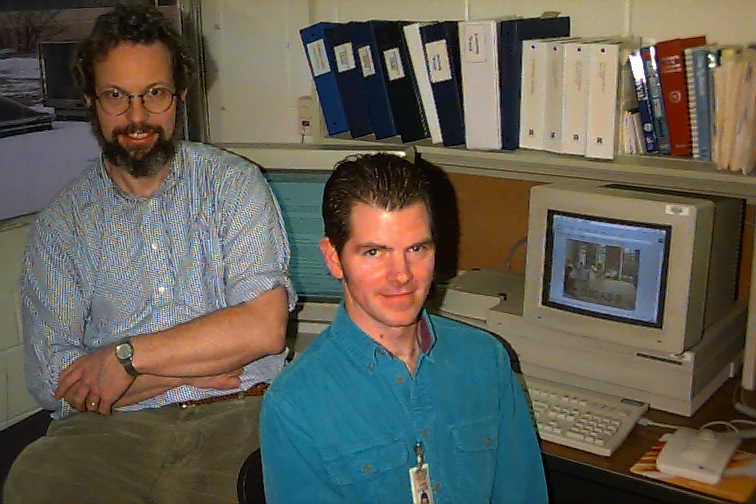

1. Code Name: DEGAS 2
2. Category: V. Source/Sink Codes
3. Responsible Physicist: Daren P. Stotler
4. Others involved in code development: C. F. F. Karney, A. Y. Pigarov, R. J. Kanzleiter, S. Jaishankar, M. E. Rensink, D. P. Coster, H. Takenaga
5. One line description: Uses Monte Carlo techniques to compute transport of neutral atoms and molecules in the vicinity of material surfaces; general three-dimensional devices can be modeled.
6. Computer systems which code runs on: Linux (Intel); others used previously: Sun OS, Solaris, IRIX (SGI), HP-UX, OSF1 (Dec Alpha), AIX (IBM), Unicos (Cray)
7. Typical running time: ~1 minute to many hours, depending on application.
8. Approximate number of code lines: 70,000
9.Does this code read data files from another code? Yes, the background plasma and geometry upon which the neutral transport calculation is based can be derived from output provided by UEDGE, DIVIMP / OSM, and XGC-0. Also, the input atomic physics and plasma-material interaction data files are derived from the output of other codes.
10. Does this code produce data files that can be read by another code? An output file containing plasma source information can be read by UEDGE. A neutral transport module based on DEGAS 2 is currently being integrated into the XGC-0 neoclassical transport code.
11. 1-2 paragraph description of code: Neutral transport in fusion devices is computed using a Monte Carlo technique in general three-dimensional geometries. DEGAS 2 has been designed as a state-of-the-art code featuring optimized geometry / tracking, dynamic memory allocation, and built-in parallel processing. General methods for handling atomic and surface physics data have been developed to make physics modifications easy. Linear and nonlinear neutral elastic scattering processes have been included. The code is designed to be run in a coupled fashion with fluid plasma codes, as well as in a stand-alone mode. It is intended to be portable with thorough documentation.
12. Similar codes to this code, and distinguishing differences: DEGAS [e.g., see D. Heifetz, D. Post, M. Petravic, J. Weisheit, and G. Bateman, J. Comp. Phys. 46 309 (1982)] is the predecessor to DEGAS 2. It uses the pseudo-collision algorithm for scoring, as opposed to the track-length estimator in DEGAS 2. The former works better in a dense plasma; the latter in a vacuum. Unlike DEGAS 2, the surface and atomic physics interactions are hard-wired into the code and are difficult to modify. EIRENE [e.g., see D. Reiter and A. Nicolai, J. Nucl. Mater. 128-129 458 (1984)] is also a Monte Carlo neutrals code. It also employs a track-length estimator for scoring reaction rates. Original user interface is arcane and difficult to use.
13. Journal References describing code (up to 3): D. Stotler and C. Karney, Contrib. Plasma Phys. 34 392 (1994). D. P. Stotler and B. LaBombard, J. Nucl. Mater. 337-339 510 (2005). D. P. Stotler, J. Boedo, B. LeBlanc, R. J. Maqueda, and S. J. Zweben, J. Nucl. Mater. 363-365 686 (2007).
14. New code capabilities planned for next 1-2 years: Addition of lithium atomic physics and sputtered impurity sources. Integration into XGC neoclassical plasma transport code.
15. Code users: H. Takenaga (JAEA), M. Rensink (LLNL), D. Lundberg (PPPL)
16. Present and recent applications of code: Modeling of gas puff imaging experiments on NSTX and Alcator C-Mod. Estimation of particle recycling coefficient in CDX-U.
17. Status of code input/output documentation. Check one: ( ) does not exist () incomplete (X) exists
18 Year Code was first used and present frequency of use: 1995. Hundreds of runs per year.
19. Estimate of Man-Years invested in developing code: 15
20. Catagories of usage of Code (Check all that apply): (X) application code to do analysis and prediction of experiments ( ) numerical testbed of theoretical ideas (X) physics module to be used in integrated moddelling (X) code for machine design
21. Language code is writen in: FORTRAN, C with FWEB preprocessor
22. Results of intercomparisons with other codes and results of validation against experiments. Verified against multiple analytic and semi-analytic models. Thoroughly compared with original DEGAS and EIRENE. Comprehensively validated against NSTX gas puff imaging experiments. Comparisons with various Alcator C-Mod experiments have been undertaken, but not completed.